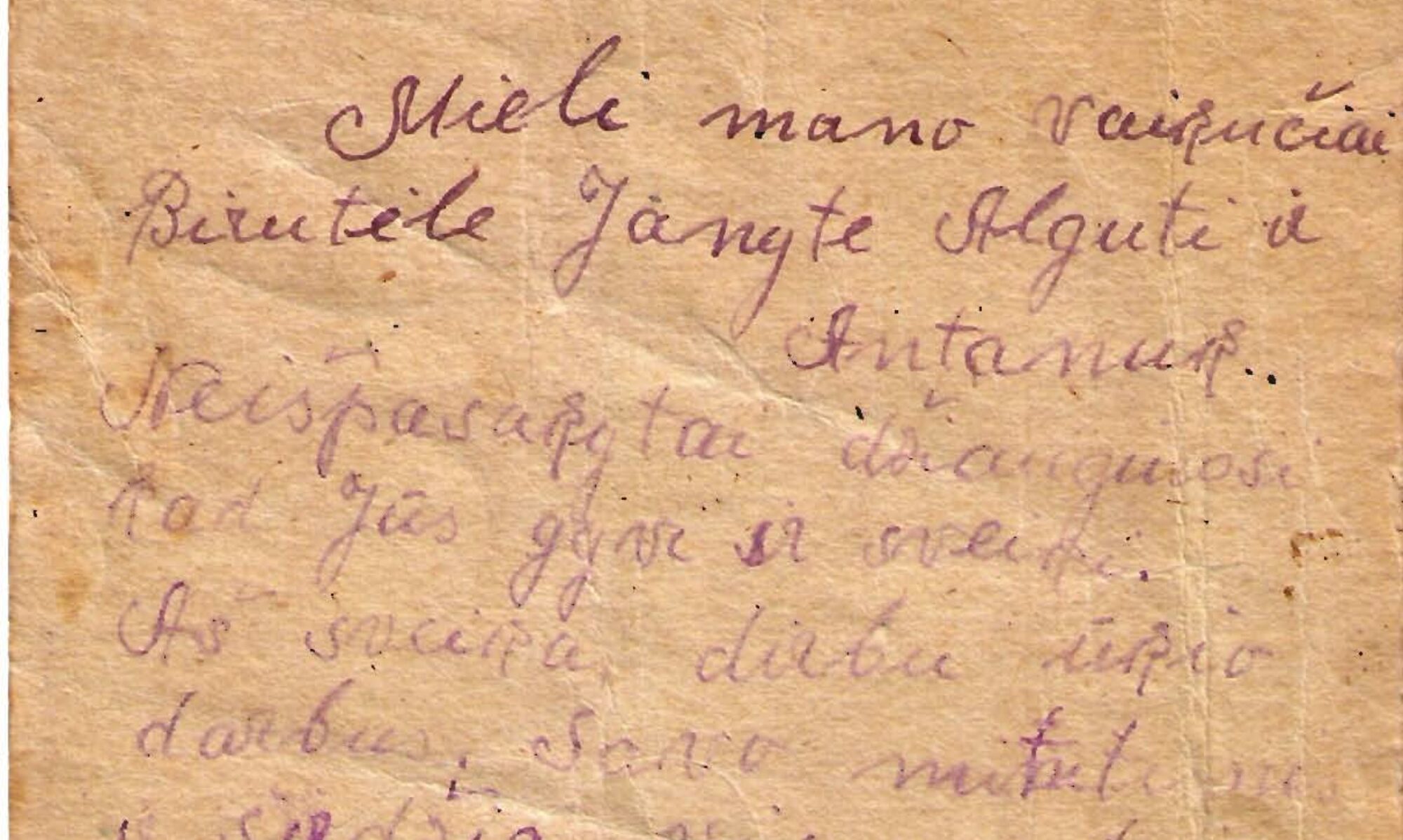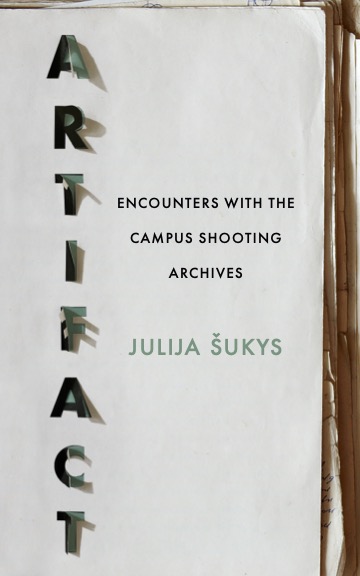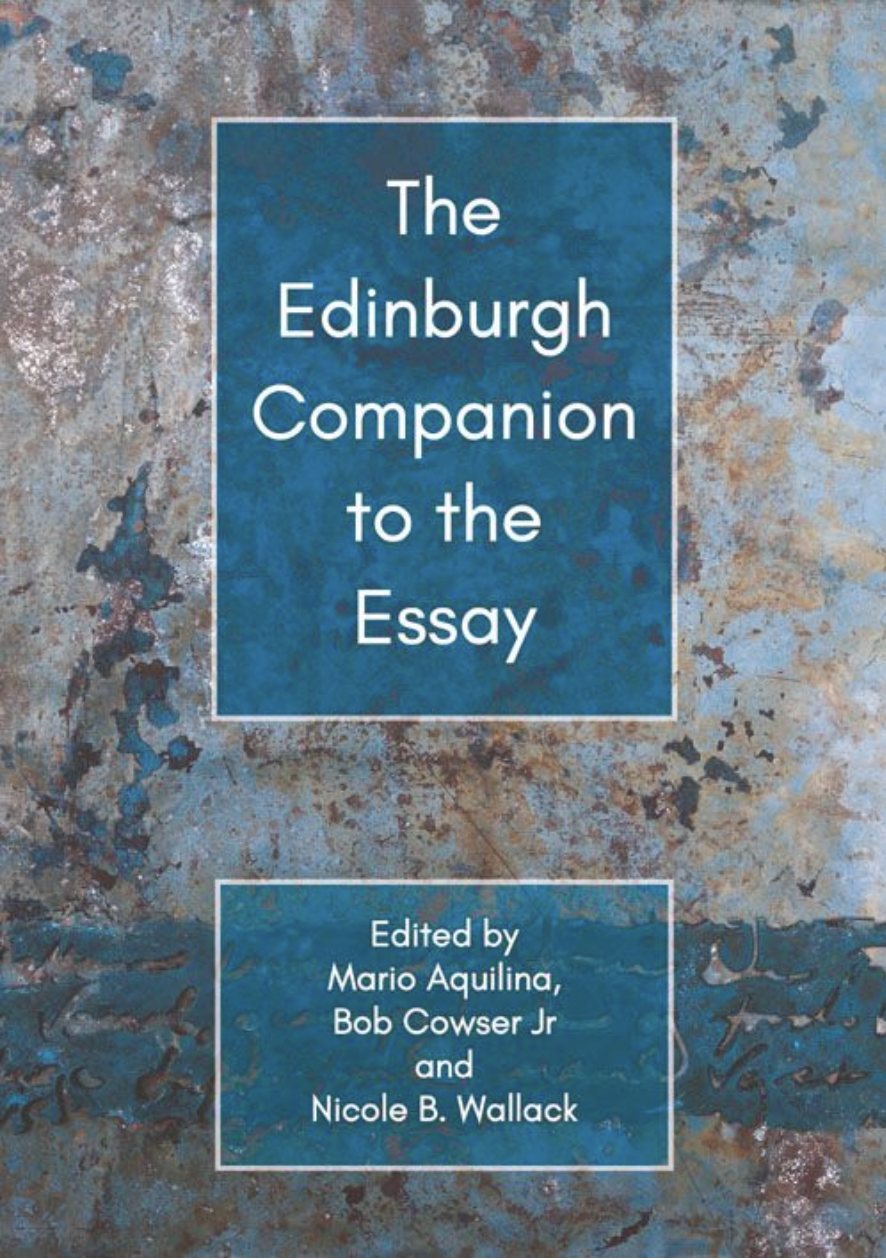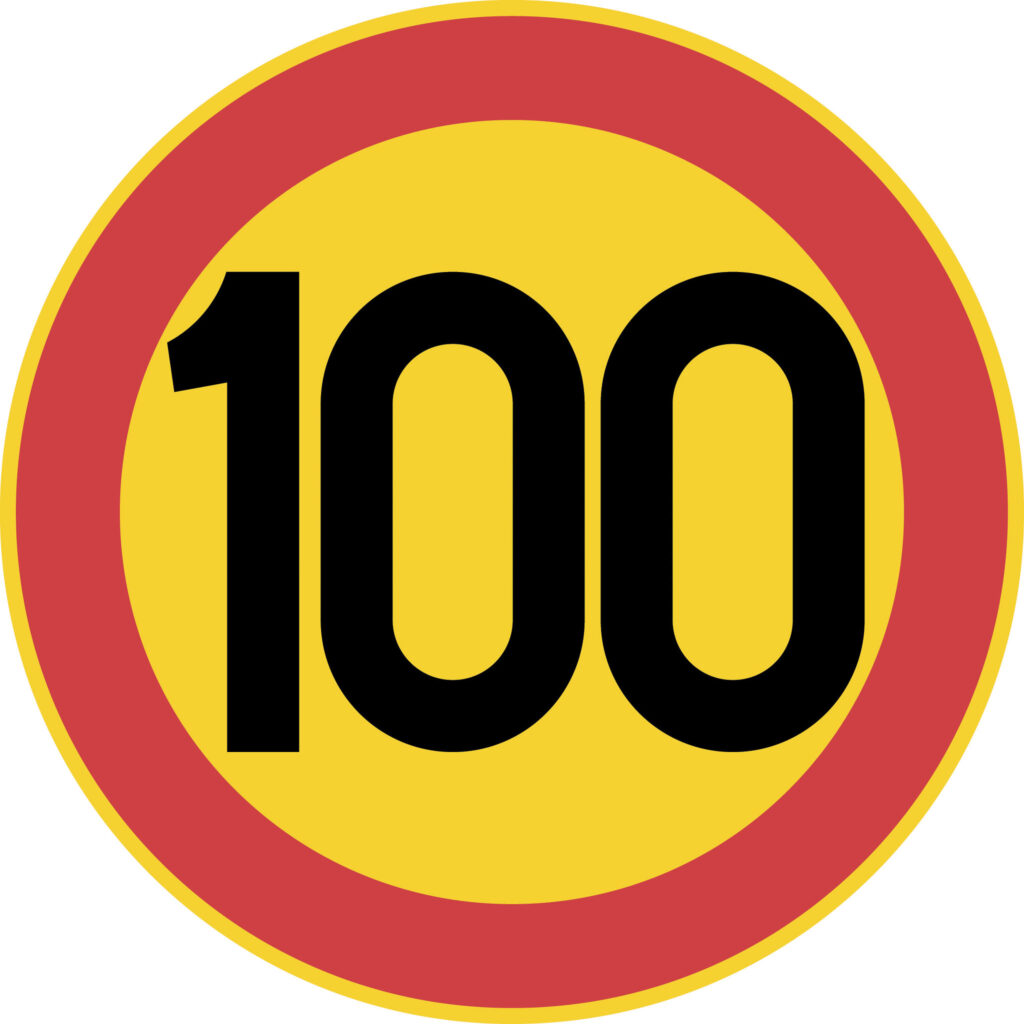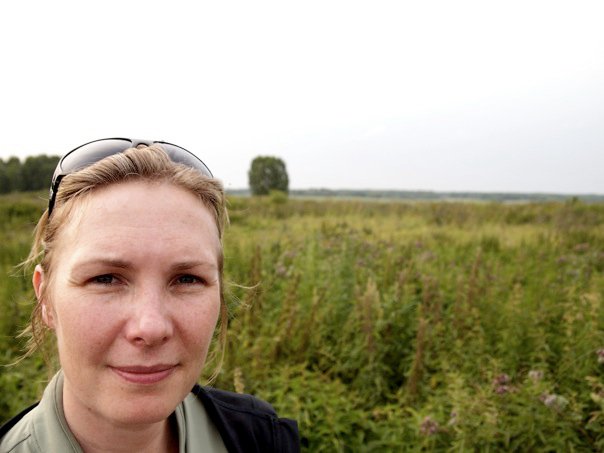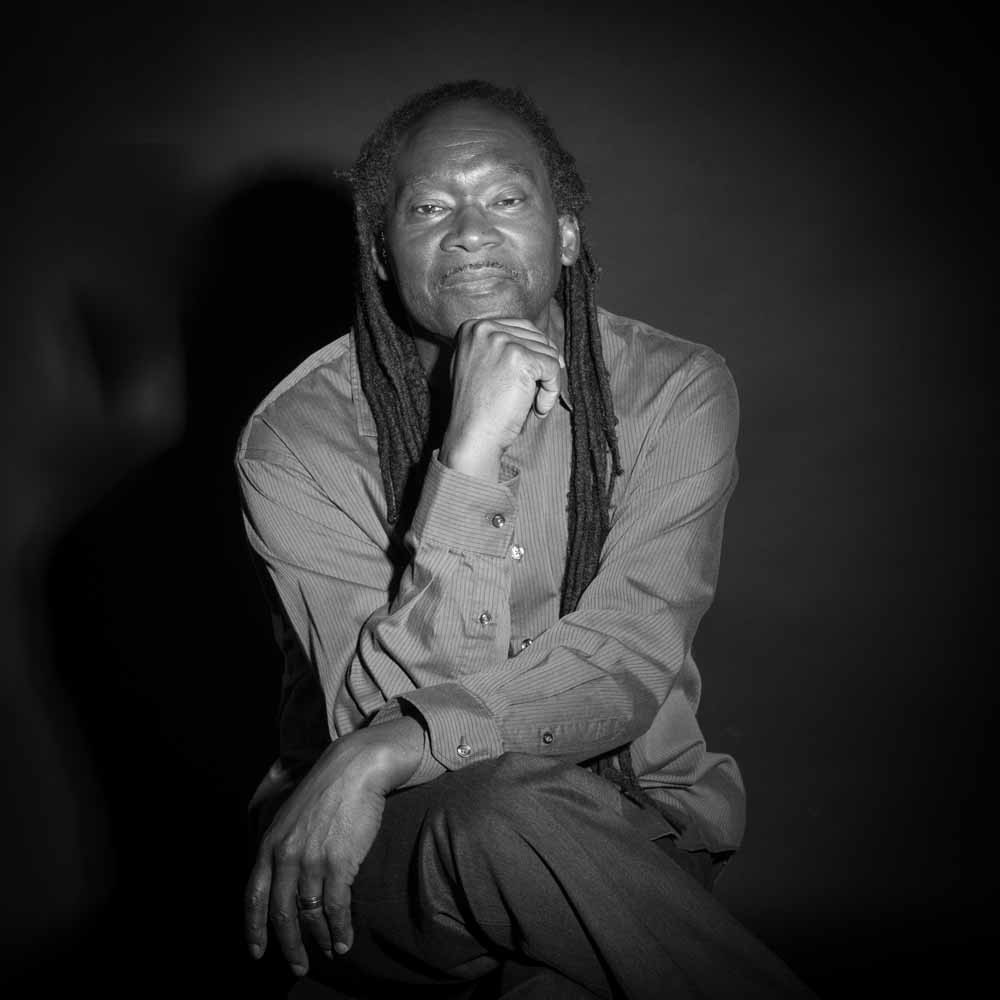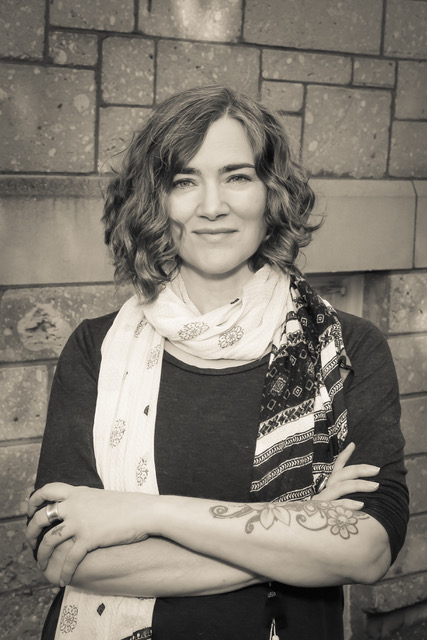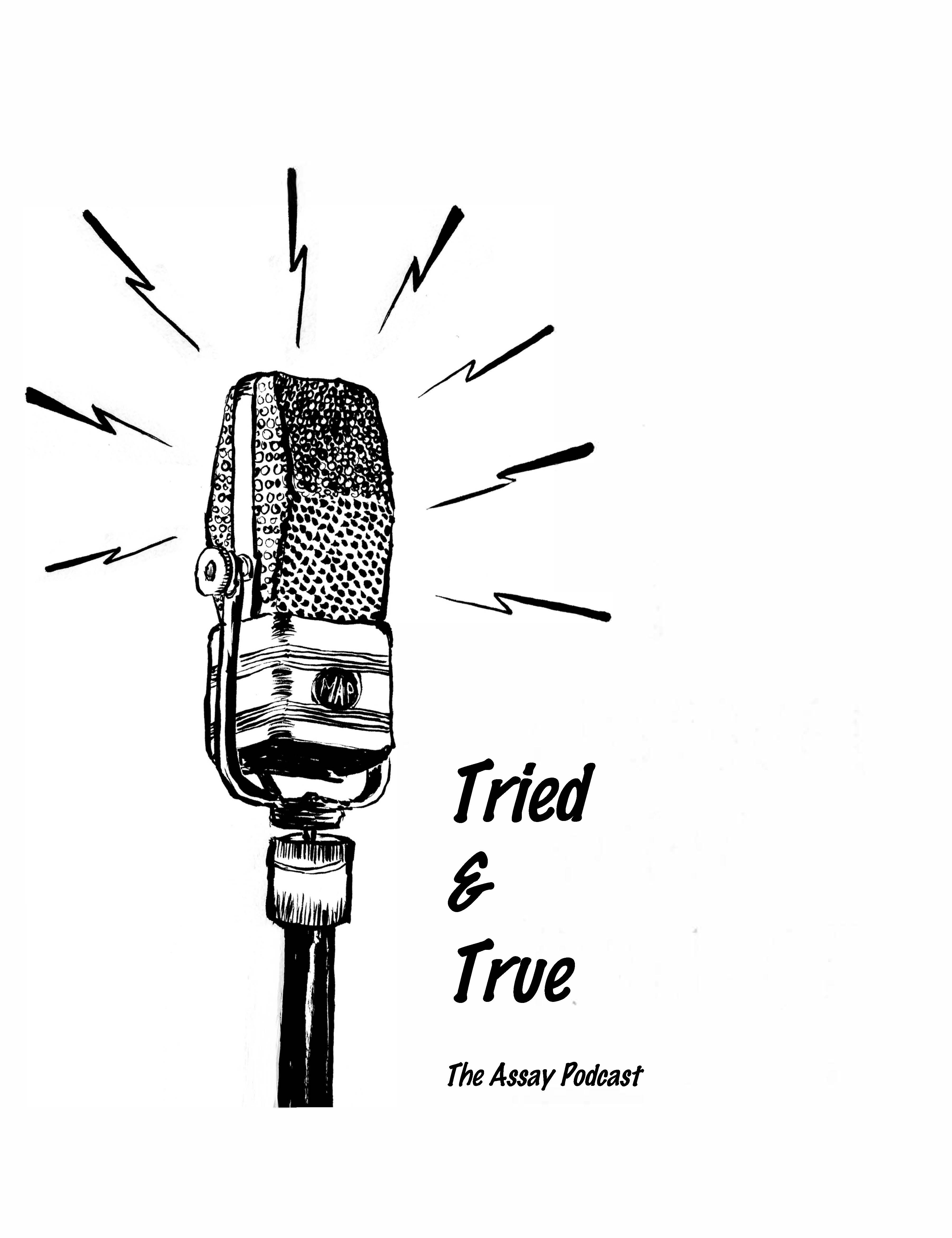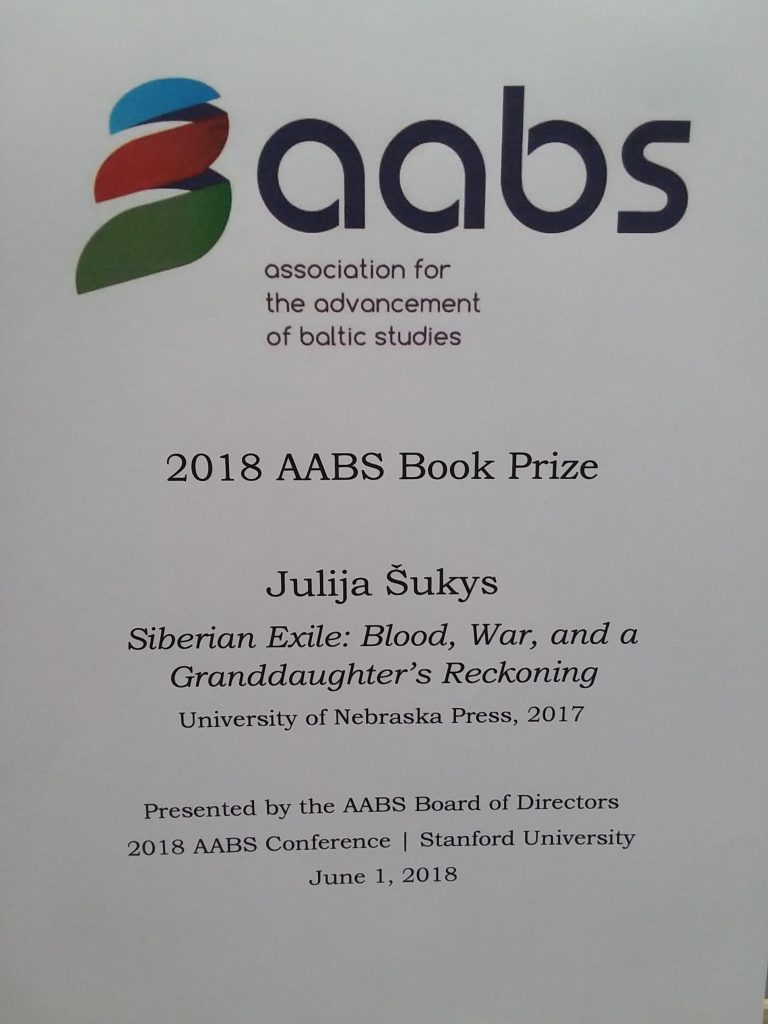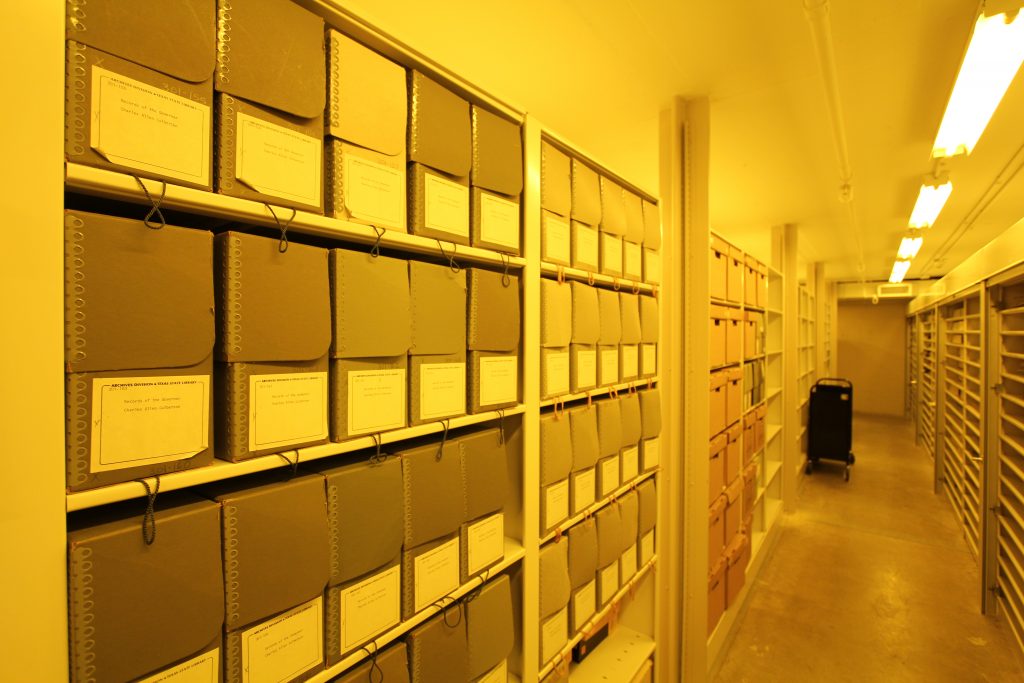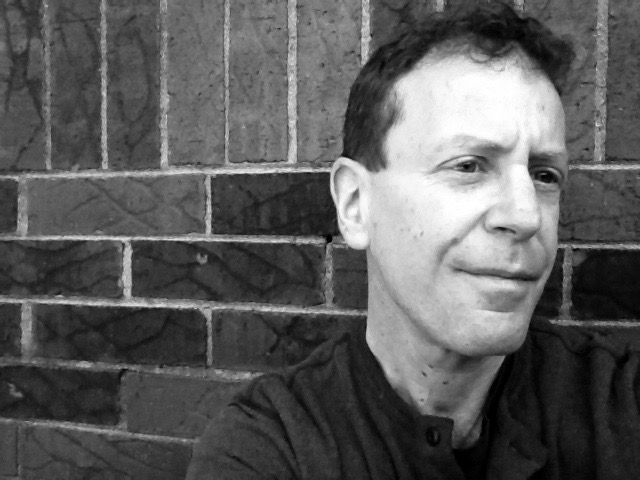
David Lazar, I’ll Be Your Mirror: Essays and Aphorisms. University of Nebraska Press, 2017.
David Lazar was a Guggenheim Fellow in Nonfiction for 2015-16. His books include the just published I’ll Be Your Mirror: Essays and Aphorisms from the University of Nebraska Press, Who’s Afraid of Helen of Troy, After Montaigne, Occasional Desire: Essays, The Body of Brooklyn, Truth in Nonfiction, Essaying the Essay, Powder Town, Michael Powell: Interviews, and Conversations with M.F.K. Fisher. Eight of his essays have been “Notable Essays of the Year” according to Best American Essays. Lazar received the first PhD in the United States in nonfiction writing, in 1989. He then created the PhD program in nonfiction writing at Ohio University and directed the creation of the undergraduate and M.F.A. programs in Nonfiction Writing at Columbia College Chicago where he is Professor of Creative Writing. He is founding editor of the literary magazine Hotel Amerika, now in its seventeenth year, and series editor, with Patrick Madden, of 21st Century Essays, at Ohio State University Press.
About I’ll Be Your Mirror: In his third book of essays, David Lazar blends personal meditations on sex and death with considerations of popular music and coping with anxiety through singing, bowling, and other distractions. He sets his work apart as both in the essay and of the essay by throwing himself into the form’s past—interviewing or speaking to past masters and turning over rocks to find lost gems of the essay form.
I’ll Be Your Mirror further expands the dimensions of contemporary nonfiction writing by concluding with a series of aphorisms. Surreal, comical, and urban moments of being, they are part Cioran, part Kafka, and part Lenny Bruce. These are accompanied by Heather Frise’s illustrations, whose looking-glass visions of motherhood—funny and grotesque—meet the vision of the aphorist in this most unusual nonfiction book.
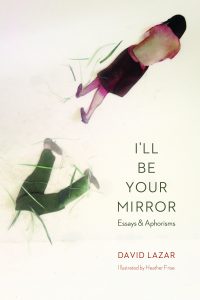
Julija Šukys: David, congratulations on your new book. It’s a finely wrought collection of formally diverse texts. In it we find longish, textured, memory-based personal essays (like “When I’m Awfully Low”), interviews both real and imagined, as well as fragmented and poetic hybrids. Themes the reader encounters include musical theater, bowling, sex, gender conformity, and nonconformity. Certain figures return again and again: your lover who committed suicide, your mother, and your son. The tone of the collection is both melancholy (“Ann: Death and the Maiden”) and kind of punchy, as in your conversation with Mary Cappello. For me, that conversation was a highlight of the book. I immensely enjoyed your disagreements with Mary about digressions and whether the term is a productive one for the essayist, your comparing of notes, and your challenging of one another’s ideas of what makes and what should make or unmake our nonfiction literary canon.
You produce three conversations here: two imagined (with Michel de Montaigne and Robert Burton) and one real (the one with Mary Cappello). I’ve always loved the interview as a form and have long thought of the essay as a conversation with a reader. Can you talk about the place of the interview or conversation in your work as an essayist?
David Lazar: What better place to talk about the interview than in an interview, Julija! Thank you! I first became formally interested in the interview about twenty-five years ago when I was doing long interviews with M.F.K. Fisher and gathering the historical interview selections that became the basis of Conversations with M.F.K. Fisher. I noticed immediately in the historical interviews how manifold the forms of published interviews were: some were formal, others informal; some were interviews broken up and interspersed into feature articles. Some interviews effaced the questioner, while others were obviously more dialogic. And when I began my own conversations with Fisher, what began as formal calls and responses, devolved delightfully into digressive (that word!) interplays, with certain questions recurring and receding, our senses of each other emerging as we circled each other, sometimes warily, sometimes fondly. I remember amusedly an editor writing to tell me that Fisher was a well-known essayist and I was not, so clearly the reader wouldn’t be interested in hearing so much of me. In addition to finding the response boorish, I thought it wrong. But in any case, that started me thinking of the interview as another cognate of the essay, both in the way one voice, the interrogated, can wander through, around, and back to certain ideas in essayistic ways, but also, again, dialogically, in the play of two voices. Solo, or duo, it’s still explorations of voice.
As I write in the MFK Fisher book, if I may be permitted to quote myself:
Etymologically, interview derives from ‘entrevue,’ a form of entrevoir, to have a glimpse of, as well as “s’entrevoir,” to see each other. We can see early, unnamed versions of the interview in the Socratic dialogues, the conversations of Satan with God in the first chapters of Job, the imaginary interview of Margery Kemp, but in its semantic infancy, the interview referred to a metting of great moment, between great personages, prince to prince, king to king, a ceremonial occasiona, before it degreaded to person to person. By 1626, Bacon can say, in New Atlantis, that is has been “ordained that none doe intermarry, or contract, until on Moneth be past from their first inter-view” . . . . The seminal Q & A:
Johnson: Why do you write down my sayings?
Boswell: I write them down when they are good.
My interview with Mary Cappello was a delight for me because I trust her so completely as both a writer and a friend. I don’t think there are many nonfiction writers working at her level right now. Plus I know I can be as silly or serious as I want or need to be in the moment with her. It’s extraordinarily liberating. Ultimately, we both hoped, as I hope here, that our sayings were good.
The imaginary interviews (which are harder than they might look!) are great fun and also serve a purpose: to engage in a living dialogue with writers who can still speak vividly, as though sitting at the table, though long gone. Burton, a favorite of mine, and the interview with Montaigne that Pat Madden and I performed, are ways of saying, “Hey, this guy can still carry a conversation.” Finding questions and responses that are spirited takes a lot of re-reading and choreography, but I enjoy it.
You’re the founding editor of Hotel Amerika, a journal that declares: “Work with a quirky, unconventional edge—either in form or content—is often favored by our editors.” In founding the journal, you created a context for the kind of work you love, respect, and produce (or, at least that’s what I surmise). I imagine this decision grew in part out of the experience of placing your first book, The Body of Brooklyn for publication. In the essay “Hydra: I’ll Be Your Mirror” you write that it took ten years for the book to find a press and describe it as follows:
My essays were all different kinds of juggling acts, with different forms and excessive digressions, photographs, vaudeville versions of the self. [. . .] It was some kind of Hydra – but think of those heads from 1963 as more like obscure objects of my own desire to construct an essay persona.” (103)
To what extent does this description of your past work still hold true of what you write today? How true is it of “I’ll Be Your Mirror,” for example?
Let’s see: about Hotel Amerika—creating the journal itself was actually quite separate from my own work. I had been the Associate Editor of Ohio Review for years at Ohio University. When that folded (long story) I was asked by the university to create a new journal. It may seem unthinkable now, but I said I would with certain terms. They were these: that I be given complete editorial control and independence; that I be given a paid managing editor; that I have a budget that allowed me to pay at least nominally for work; and that I be given a course reduction equivalent to that of the past editor of the Ohio Review. They said yes! Boy, talk about paradise lost. In creating the magazine it was important to me to put out a magazine that looked lovely, was photographic in its covers, was pleasant to hold, and was a place where one would find work that both respected generic conventions, especially in the essay, and completed denied, which led to our TransGenre issue, and our use of the transgenre category for ever issue. We wanted to have issues that, yes, and here is the connection to my work, had a lot of different stuff going on—images, and fractured essays, prose poetry and literary criticism, translations, etc. Behind it all we tended to value work with a playful ear and a playful sensibility that still was willing to embrace the most serious questions. And you’ll probably find the figure of the flâneur and the flâneuse in more of our works than most magazines. So, yes, you’re quite right, there’s a connection to my work. But I’ve always felt that an interesting magazine has to have a sensibility (part of me is unregenerate Jamesian, and the word sensibility rings importantly) and that sensibility comes from editors steering the magazine’s vision over time.
About I’ll Be Your Mirror: Essays and Aphorisms, yes, I think it, too, covers all kinds of ground in terms of different kinds of essay, and then the poetic aphorisms in the back. The aphorisms were actually a separate book, and it was Alicia Christiansen, my editor at Nebraska, who so cleverly suggested merging the two. I loved the idea. So the book is a two-fer! But I think it works together because the connection between the voice of the aphorisms and the voice of the essays is so clear. And because I think the aphorism is such an important part of the essay. I talk to my students about the aphorism and have them write them all the time. And I did a special issue on the aphorism in Hotel Amerika some years ago. So there go—it’s full circle. That issue actually started my own writing of aphorisms. And I posted each of them on Twitter, for about a year and a half. Twitter is only really interesting as an aphorism space.
To answer your question directly: that description of my essay writing still holds true. My essay voice is very performative and quirky, and the vaudeville description is apt. I’d like to think it’s a kind of Beckettian vaudeville, though: as Winnie says, in Happy Days, “sorrow keeps breaks in. . . . “
Can you tell me a little about how form works for you? And about the decision (if it was a conscious decision) to bring these different essay shapes together into the same text?
I almost never lead with form—it’s not the way my mind works. I start with whatever I’m thinking about and see what kind of trouble I can get into. Before you try to find a way understand what it is you’re trying to defuse, I think it helps to toss in as many monkey wrenches as possible, write the most complicated version of your dilemma, your set of ideas, your confessional conundrum, whatever version of essaying you’re doing. After those feverish early drafts, that’s when form kicks in for me, as a way of creating order, cutting extraneous material, finding the heart of matter. I let the material suggest form sometimes, as in, “oh, there are really two voices working here, so why not write it in two voices.” Or, how could these ideas sit with each other if I pushed them towards each other without overt transitions. Sometimes forms take wilder shape, the sequence of self-deconstructive photo prose poems in Body of Brooklyn, for example, where I wanted to comment on the nature of self-commentary itself. But form is functional, and I never say, for example, “I think I’ll write a braided essay,” or some such thing, and I teach that way, too. I don’t even like the term, “braided essay,” for that matter. Isn’t one just alternating parallel subjects. Must it have a poeticized name? I fear I’m sounding cranky.
Not cranky! In fact, you’ve introduced my next question. Let’s talk about the essay, its past and its present. You describe in “Hydra” how you switched paths from poetry to essay, “which at the time felt like changing sports, rather than leagues” (103). Ultimately, you earned the first PhD in nonfiction writing “as though I were some kind of generic freedom writer” (103) (I love that), and for this reason in addition to many others, you are perhaps better placed than most to take a long view, both forward and back, of the essay as form.
Of the eternal problem of what to call this thing we write, you offer: “Nonfiction is in many ways a non-genre, the un-genre” (103). Its defining characteristic appears to be hybridity: “To an extent almost all nonfiction offers some form of hybridity, biographies straying into history, essays digressing into informational riffs, autobiographies becoming necessarily biographical, etc.” (104). You appear to be arguing for a more expansive understanding of the essay. No more personal vs. classical vs. spiritual vs. lyric essay. Let’s be done with the braided and fractured and meditative essay. Rather than looking for new genres (I think I hear you say), let’s expand our sense of the essay, our beloved form and genre that continues to morph into shapes that surprise us. Have I understood your position? Is there something here you want to push back on or dig into? I’d love to hear/witness you riff on all of this.
Well, Julija, you did indeed anticipate the answer I gave above! Yes, at times I feel I’m misunderstood as an essay classicist (which is funny to me considering how experimental some of my work has been and much of the work I’ve published) because I’ve tended to emphasize a few points, fairly basic that are rather important to me: the history of the essay is extraordinarily delightful and various, and I can’t imagine why someone would make it their vocation without exploring that rich field. Especially mining the writers who were early and formative practitioners. And all essays represent a desire: to explore, to confess, to untangle, to express, and to interrogate the nature of that desire. The formal distinctions you mention are, yes, like carpenter’s tools. The important thing to remember is that we’re talking about a house with many rooms, and that house is the essay. However, neither white space, nor reverse chronology, nor braids can build that house. Only desire can. One can call it whatever one wants, but I like the simplicity of: essay.
You subtitled this book “Essays & Aphorisms.” Which of these texts are essays and which are aphorisms? What’s the difference? Can an aphorism be an essay, or vice versa?
I think of an aphorism as a short, self-enclosed form, usually one line, pithy, witty. But as with the prose poem, there are variations. Some are philosophical, some are arch. Some urbane, others lyrical. Some aphorisms are political, direct, whereas others are closer to one line poems. But aphorisms, as the special issue I did for Hotel Amerika showed, come in more forms that I thought. What do we call the two or three sentence aphorism? The string of related aphorisms? Well, we might sometimes call it a short essay, or a prose poem, or . . . a string of related aphorisms. We don’t really have answers for some of these questions, which makes writing them fun. I think that’s true, at least for me, for the essay as well. Every essay I write is just an essay. It’s not a lyrical essay or mosaic essay or segmented essay, although one might (or might not) use these words to describe it. I see some of the new formal categories as limiting, rather than liberating. So I like to see where different forms or subgenres intersect and talk about it: hey, that’s something like a short essay or maybe a densely aphoristic paragraph or, or, or.
But aphorisms are central to the essay, and I can’t imagine the essay without the aphorism. Think of the essays you love, and immediately aphorisms come to mind as the dramatic moments of thought in those works.
I read this book out of order in part because I couldn’t resist skipping ahead to the last piece (an aphorism, a series of aphorisms), “Mothers, Etc.” I read it late one night in bed. I couldn’t help myself. Tell me how this gorgeous collaboration with illustrator Heather Frise came about, both practically speaking and artistically-philosophically.
I’m absolutely delighted that you skipped around. And particularly to the aphorisms section and Heather Frise’s work, which I think is so extraordinary. The Mothers section of the aphorisms popped up as an idea when Heather and I went to the Contemporary Art Museum in Chicago some years ago. When we came out, we saw a huge neo sign that just said, “Mothers,” by Martin Creed. We both thought it was wonderful and immediately decided to collaborate on some kind of piece about mothers. I had seen many of Heather’s drawings and thought they were just fantastic: grotesque and beautiful, disturbing alternative worlds. They were . . . fierce. I had been writing aphorisms, many of which were a bit strange, and thought this would be a good match, so I asked Heather to just start sending me pictures and I started sending her aphorisms, and we mixed and matched. I go back to those pictures all the time. They’re my favorite part of the book.
On the “Mothers, Etc.” front: I’m interested to hear how you think about line breaks and white space. How do you know if a text needs a visual vocabulary as well as a linguistic one?
That’s a wonderful question. I felt I need to create some kind of thematic, but asymmetrical pacing that made the reading of the aphorisms pleasurable and meaningful. The thing about reading aphorisms is that, hopefully, they make you think, they stop you for a while. So, at very least, I wanted some space to give the reader a way to keep reading, to think, white space as cogitation. It’s miraculous to me that Nebraska, again, Alicia Christenson, completely understood this. To have simply listed aphorism after aphorism, fifteen on the page, would have exhausted and bored the reader. As for where I created the breaks, how large they were, how many on a page—part of this was through creating thought groupings, and part of it was intuitive, and favoring, on occasion, ones I wanted to give more emphasis to.
Tell me about where you come down on the term lyric essay. I get the sense that you reject it because all essays, one way or another, are lyric (are they? ugh…I can’t tell anymore). Anyway, this term has rooted itself our CNF/essay reading and teaching culture so firmly. It’s become shorthand for a certain kind of text: the fragmented, the poetic, the enigmatic. Do you think the term lyric essay has earned its place? Have you made peace with it? Or should we just say essay and leave it at that?
To extend a bit, I tend, yes, to favor essay because essays have always been lyrical, and essays have always been enigmatic, poetic, fragmented. There’s a difference between the adjectival—that essay is lyrical, and the noun form, that’s a lyric essay, which isn’t that useful to me. Many works that are called lyrical essays don’t seem to me to think or move like essays at all. Perhaps we should call them prose poems, or . . . strings of aphorisms. Or something else entirely.
How has the landscape for essayists changed since you published that first Hydra collection, The Body of Brooklyn? Do you feel hopeful about the essayistic literary context and community? Are we indeed in a golden moment for nonfiction and the essay in particular?
Oh, dear, it’s so much better now. The standard line when I was trying to publish Body of Brooklyn was that essay books were verboten. Even when I did finally get it taken by Iowa, they tagged it as memoir on the back! And you couldn’t even think of using “essay” in your title. I can’t tell you how it’s delighted me that Nebraska, to its everlasting credit, has included “essays” in the subtitles of my last two books. Of course there were some essays books being published. People like Hoagland, Didion, Baldwin, Epstein, Fisher, but many of these writers came to publishing books of essays through other genres or disciplines, and there were almost no younger essayists around until Phillip Lopate and Richard Rodriguez and a few others broke through.
Are we in a golden age? I’d rather tone it down to a vibrant age. I think there is a lot of interesting experimental writing going on, a lot of hybrid stuff, and as is the case with anything, much of it is not very interesting, and some of it is wonderful. I think in terms of the essay proper, I’m able to find some very fine practitioners out there, some of whom Pat Madden and I are lucky to be able to publish in our book series, 21st Century Essays, at Ohio State. Kristen Rowley, the editor in chief at Ohio State, who moved over after created the wonderful nonfiction list at Nebraska, has just been a great advocate for literary nonfiction. I’m giving her my golden Oz medal for meritorious service. But I while I think there are some very fine essayists out there now, I don’t there are many great ones, at least that I see in the US. And you need great practitioners for a golden age. What I’d like to see more of in younger essayists, before they start hybridizing the form, is seeing how far they can drive on gasoline. Since we’re talking about words, the environment can take it.
But there’s excitement about nonfiction writing, and that’s a good thing.
Thank you, David! I’m so happy to have had this conversation.
Thank you, Julija for your superb questions. I can’t imagine a better probing questioner.
Buy I’ll Be Your Mirror here.
[Photographs courtesy of David Lazar]
